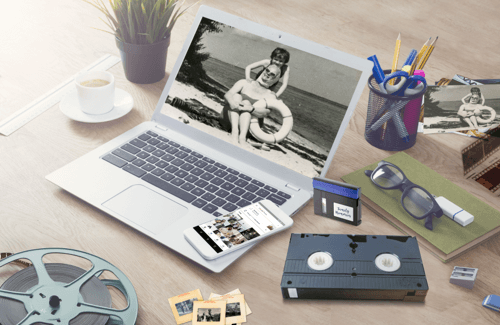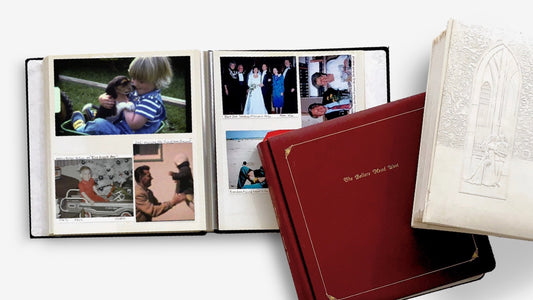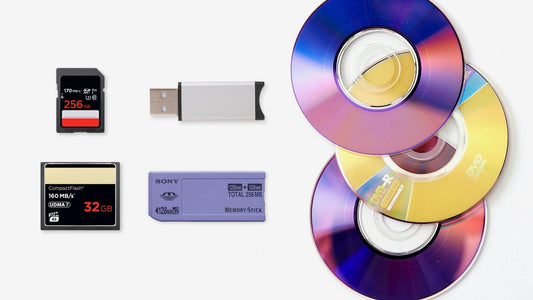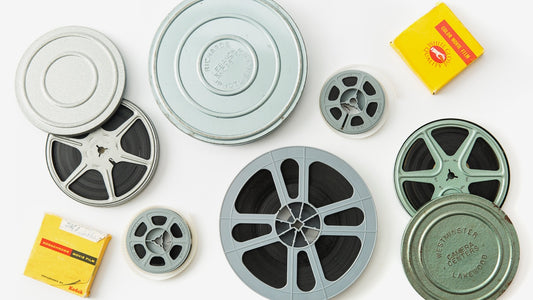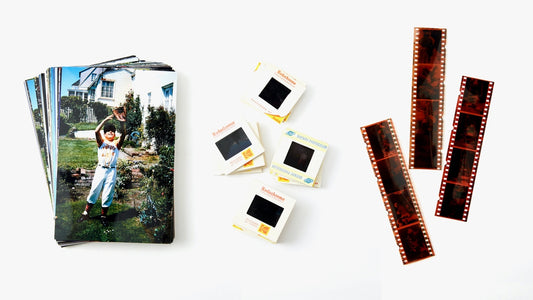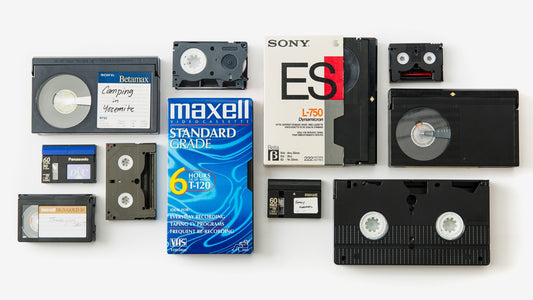Your life’s story is likely scattered across a thousand digital pieces. Photos from a family vacation are on an old laptop, your baby’s first steps are on a forgotten memory card, and decades of prints are sitting in a box. Bringing it all together can feel overwhelming. This guide is your map to reassembling that story. Learning how to organize digital photos is about more than just tidying up—it’s about creating a complete, cohesive archive of your life. We'll show you how to gather every memory into one secure place you can finally enjoy and protect for years to come.
Key Takeaways
- Gather and Back Up Before You Start: The most important first step is to pull all your photos from every device into one central folder. Before you delete or rename a single file, make a complete copy of this folder on an external hard drive to create a safety net.
-
Build a Simple Framework for Your Files: A straightforward, chronological folder structure (like
Year > Event) is the easiest to maintain. Combine this with consistent file names to create a logical system that helps you find any memory in seconds without complex software. - Turn Maintenance into a Small, Regular Habit: Keep your photo library from getting messy again by setting aside 15 minutes each week or month to sort new photos and delete duplicates. Regularly updating your backups ensures your organized collection stays safe for the long term.
Why Is It So Hard to Organize Digital Photos?
If looking at your digital photo collection feels more overwhelming than joyful, you’re not alone. We take more pictures than ever before, and without a system, those precious moments can quickly turn into digital clutter. The good news is that you can get a handle on the chaos. The first step is understanding why your photos became so disorganized in the first place. It’s rarely about being lazy or messy; it’s usually because our photos are scattered across a dozen different devices and platforms, each with its own quirks.
From the smartphone in your pocket to that old laptop in the closet, your memories are likely spread far and wide. This digital sprawl makes it nearly impossible to find a specific photo when you need it, let alone enjoy your collection as a whole. Recognizing these common photo messes is the key to creating a system that finally works for you, turning that mountain of files back into a curated library of your favorite memories.
Do You Have One of These Photo Messes?
Think about all the places your photos might be hiding. Many of us have thousands of images and videos spread across current and past phones, computers, forgotten hard drives, and even old social media accounts. You might have photos on a USB drive from a family wedding, downloads from a friend's shared album, and screenshots you forgot you even took. This digital fragmentation is the primary reason organizing feels so daunting. Each device and service becomes its own isolated island of memories, making it difficult to see the complete picture of your life’s moments.
The Real Problem with Scattered Photos
When your photos are scattered everywhere, they become a source of stress instead of happiness. Instead of easily finding that perfect photo for a birthday post or a holiday card, you end up digging through countless folders and devices, often giving up in frustration. More importantly, these fragmented files are at risk. A crashed hard drive, a lost phone, or a forgotten cloud password could mean losing those memories forever. Organizing your digital photos helps you find what you’re looking for, but a solid system also protects them. Bringing everything together, including old physical pictures through a photo transfer service, ensures your memories are safe and accessible for years to come.
The Scale of the Problem in Numbers
Let's put some numbers to this feeling of being overwhelmed. On average, people take about 20 photos every day. That’s over 7,000 new files a year, adding to the thousands you already have. It’s no wonder so many of us feel buried in digital clutter. Tackling a backlog of this size is a serious time commitment; for some, sorting through years of photos can take a full month of dedicated effort. The real danger isn't just the mess—it's the risk of losing everything. Without a system, your memories are vulnerable. A solid backup strategy is essential, with experts often recommending you keep at least three copies of your photos: one on your computer, one on an external hard drive, and one in a cloud service to protect against any single point of failure.
A Quick Guide to Photo File Types
You’ve probably seen file extensions like .JPG, .PNG, or .HEIC and wondered what they mean. Understanding the basics can make organizing much easier. JPEGs (.JPG) are the most common file type; they’re great for sharing because they balance quality with a smaller file size. PNGs (.PNG) are often used for graphics and can have transparent backgrounds. If you have a newer iPhone, you’ll see HEIC files, which offer high quality in an even smaller file size. You don’t need to be an expert, but knowing the difference helps you decide which files to keep for printing versus sharing online. This basic knowledge is a great foundation for building your new, organized photo library.
Your Pre-Organization Checklist
Jumping straight into sorting thousands of photos without a plan is a recipe for feeling overwhelmed. Before you create a single folder or rename a file, taking a few preparatory steps will make the entire process smoother and far more successful. Think of it as setting up your workspace before starting a big project. By gathering all your materials, defining what you want to achieve, and creating a safety net, you set yourself up for a win. This initial groundwork ensures you won't lose precious files or get sidetracked halfway through. It turns a daunting task into a manageable and even enjoyable trip down memory lane.
Step 1: Gather Every Single Photo
Your first mission is to conduct a digital scavenger hunt. Your photos and videos are likely scattered across a dozen different places: old laptops, forgotten thumb drives, various memory cards, and even old CDs or DVDs. Go through your drawers and boxes and pull out every device that might hold your memories. The goal is to create one central "staging area" on your computer or a dedicated external hard drive. Copy every single image and video file into one main folder. Don't worry about duplicates or blurry shots yet—just get everything in one spot. If you have files on outdated formats, a digital media transfer service can help get those memories onto your computer so they can be included.
Don't Forget Physical Media
While you’re hunting down digital files, don’t overlook the memories stored in shoeboxes, photo albums, and dusty carousels. These physical prints, slides, and home movies are a huge part of your family's story, and leaving them out means your archive will be incomplete. To create a truly comprehensive collection, you’ll want to bring these into your digital library. Digitizing your old photos not only protects them from fading or damage but also lets you organize them right alongside your newer pictures. Services that specialize in photo transfer can turn your prints into high-quality digital files, and you can even get entire books digitized with album scanning. The same goes for old home movies on VHS tapes or film reels. A video transfer service can digitize them, ensuring every memory is safe, accessible, and ready to be shared for years to come.
Step 2: Set Your Organization Goals
It's easy to get bogged down by aiming for a perfect, museum-quality archive. Instead, focus on what you actually want to accomplish. A great goal is to create a system that makes your family memories easy to find, manage, and enjoy. What does that look like for you? Maybe it’s being able to quickly find all the photos from your last family vacation or pulling up your favorite baby pictures without a 20-minute search. Your goal doesn't need to be complicated. Something as simple as, "I want to organize my photos by year and major event," is a perfect starting point. This clarity will guide your decisions and keep you from getting lost in the details.
Step 3: Back Up Everything Before You Start
This step is non-negotiable. Before you start deleting, moving, or renaming files, you absolutely must create a backup of everything you just gathered. This protects your memories from accidental deletion or file corruption. Keep in mind that a cloud service that "syncs" your files, like iCloud Photos, isn't a true backup. If you delete a photo from your phone, it often gets deleted from the cloud, too. A true backup is a separate, untouched copy. The easiest way to do this is to copy your entire "staging area" folder onto an external hard drive. This gives you a safety net, so you can organize with confidence, knowing the originals are safe. It's the same reason people use a photo transfer service—to create a secure digital backup of physical prints.
How to Create a Photo Organization System That Lasts
Now that you have all your photos in one place, it’s time to create a system that makes sense for you. Think of this as building a personal library for your memories. The goal isn’t to find one “perfect” method, but to create a simple, reliable framework that you can actually stick with. A good system has a few core parts: a logical folder structure, consistent file names, and helpful tags. When these elements work together, you can find any photo you’re looking for in seconds.
The most important thing is consistency. Whatever structure and naming convention you choose, apply it to all your photos going forward. This initial effort will save you countless hours of searching later and make managing new photos a breeze. It turns a chaotic digital shoebox into an organized, accessible archive of your most precious moments. And once your old photos are organized, it's much easier to add newly digitized memories from a photo transfer and keep everything in one tidy place.
Design a Simple Folder Structure
The foundation of any good photo organization system is a clear and simple folder structure. This is your digital filing cabinet. The most effective approach is usually chronological because it’s intuitive and scalable. A great place to start is with a main folder for each year. Inside each year’s folder, you can create subfolders for specific events or months.
For example, your structure might look like this: Photos > 2023 > 07-Summer-Vacation. Or, if you take a lot of pictures, you might prefer: Photos > 2023 > 07-July > Beach-Trip. There’s no right or wrong answer here—the best system is the one that feels natural to you and that you’ll be able to maintain without much thought.
Alternative Folder Structures
While a chronological system is a fantastic starting point, it might not fit how your brain works. If you’re more likely to search for "all our beach trips" than "photos from July 2022," a category-based structure could be a better fit. You can create main folders for broad categories like "Holidays," "Family," "Pets," or specific locations that are important to you. Within those folders, you can then add subfolders by date or event, like Family > The-Smiths > 2023-Reunion. The key is to build a personal filing system that feels intuitive. The best approach is always the one you’ll actually use, ensuring your memories, whether they were born digital or brought to life through a film transfer, are always easy to find.
Create a Consistent File Naming Formula
Have you ever scrolled through a folder of photos with names like IMG_5821.JPG or DSC_0045.JPG? It’s impossible to know what’s in the photo without opening it. That’s why renaming your files is a game-changer. A consistent naming convention gives you valuable information at a glance and makes your photos automatically sortable.
A popular and effective format is YYYY-MM-DD_Event-Name_###.jpg. For example, a photo from a family trip might be named 2023-07-15_Beach-Trip_001.jpg. This tells you the exact date and the event, and the sequence number keeps your photos in order. While you can rename files one by one, many photo programs let you rename them in batches, which saves a ton of time.
Use Tags to Find Photos in Seconds
Folders and file names are great for broad organization, but tags and keywords are your secret weapon for finding specific images. Think of tags as labels you can attach to your photos. You can tag photos with the names of people in them, the location, or the activity. For example, you could tag a photo with "Mom," "Grand Canyon," "Hiking," and "Sunset."
Most photo management software, including the default Photos app on Mac and Windows, allows you to add keywords. The next time you want to find every picture you have of your mom, you can just search for her name. This is far more powerful than just relying on folders, especially when you want to find photos that span different years and events.
Group Photos into Themed Albums
This is where all your hard work pays off. Once your photos are sorted and tagged, you can easily group them into virtual albums or collections without moving the original files. This is the fun part—it’s like creating a personal playlist of your favorite memories. You could create an album for "Leo's First Year," "Our Favorite Holiday Moments," or "Summer Trips."
These collections are perfect for sharing with family, creating slideshows, or designing photo books. It’s also a wonderful way to integrate your older memories. After you scan your photo albums, you can add those newly digitized images to your themed collections, bringing your past and present together in one beautiful, organized library.
The Best Tools for Organizing Your Photos
A solid folder structure is a great foundation, but the right tools can completely change how you interact with your photo library. Think of them as your personal digital assistants, helping you sort, store, and find your favorite moments in a snap. You don’t need to use all of them, but adding one or two to your workflow can make a world of difference. From powerful desktop software to handy mobile apps, here are some of the best tools to help you get organized.
Photo Management Software
If you’ve ever struggled to find a specific photo just by looking at file names and folders, photo management software is for you. These programs create a searchable catalog of your images, letting you add keywords, tags, and ratings. Adobe Lightroom Classic is a favorite among photographers for this reason—it lets you organize photos using all kinds of details, like where a photo was taken or who is in it. For a powerful and free alternative, check out digiKam. It helps you sort photos into albums and collections, making it easy to find pictures based on dates, ratings, or even facial recognition.
Leverage AI-Powered Features
Manually tagging every photo is a chore no one wants to do. Thankfully, many modern photo organizers use artificial intelligence to do the heavy lifting for you. These smart tools can automatically add relevant tags, making your pictures instantly searchable by identifying objects and scenes like "beach," "mountains," or "Christmas." One of the most helpful features is facial recognition, which automatically groups photos of the same person together. This means you can find every picture of your kids or grandparents with a single click. This technology also powers contextual search, allowing you to find images based on their content—like searching for "dog at the park"—even if you never tagged them, streamlining your organization efforts.
Finding the Best Cloud Storage for Photos
Cloud storage is fantastic for accessing your photos from any device and sharing them with family. However, it’s important to understand how your service works. Many services like iCloud primarily "sync" your photos, meaning if you delete an image from your phone, it might also disappear from the cloud. A true backup saves your files independently. For a great storage option, Amazon Photos offers unlimited, full-resolution photo storage for Prime members, which is an incredible value. Just remember to treat the cloud as one part of your backup plan, not the only part.
Key Differences in Cloud Services
Not all cloud services are created equal, and the biggest difference lies in "syncing" versus "backing up." Syncing services, like iCloud Photos or Dropbox, are designed to keep your files identical across all your devices. This is incredibly convenient, but it has a catch: if you delete a photo from your phone to save space, the sync service will likely delete it from the cloud, too. A true backup service, on the other hand, creates a separate, independent copy of your files. It acts as a vault, protecting your photos from accidental deletions on your primary devices. This distinction is crucial for ensuring your memories are truly safe for the long haul.
Tips for Apple Photos and iCloud Users
If you’re an iPhone user, you’re probably familiar with iCloud Photos. It’s a fantastic tool for keeping your pictures accessible on your iPhone, iPad, and Mac. However, it’s important to remember that it’s a syncing service, not a true backup. To protect your memories, you need a separate copy. The simplest way to do this is to periodically export your photos from the Photos app on your Mac to an external hard drive. This creates that essential safety net, giving you a complete, untouched archive of your images. With that backup in place, you can organize, edit, and delete photos within your iCloud library freely, knowing the originals are secure.
Apps That Make Photo Organization Easier
One of the most daunting parts of organizing is dealing with all the clutter—the duplicates, the blurry shots, and the dozen screenshots of a recipe. Thankfully, there are apps designed to make this process painless. Apps like Gemini Photos and Slidebox scan your phone’s camera roll and help you quickly identify and delete photos you don’t need. For cleaning up your computer, specialized software can find duplicate files that are taking up space. You can use a tool like PhotoSweeper on a Mac or AllDup on a Windows PC to find and remove them in minutes.
Why You Still Need an External Hard Drive
Before you do anything else, consider making an external hard drive your central hub. This is the perfect place to gather all your photos from different phones, computers, and memory cards into one single location. Having all your memories in one spot prevents them from being scattered across various devices and makes the organizing process much more straightforward. An external drive gives you a private, offline copy of your entire collection that you completely control. It’s the first and most important step in creating a reliable backup system before you start sorting your files or uploading them to the cloud.
How to Manage Your Photo Library Day-to-Day
Once you’ve built your digital photo system, the next step is to maintain it. Think of it like tending to a garden—a little regular care keeps everything beautiful and easy to find. Managing your collection isn't about endless work; it's about creating simple habits that keep your library from getting messy again. By regularly curating, polishing, and sharing your photos, you ensure your memories remain accessible and vibrant for years to come. Here’s how to handle it.
The Art of Deleting Photos (Without Regret)
The most impactful habit you can build is regularly cleaning out photos you don’t need. This means getting rid of duplicates, blurry shots, random screenshots, and the ten near-identical pictures you took to get one good one. Be honest with yourself and choose just the best one or two from a series. This practice saves a surprising amount of storage space and makes browsing your collection a much more enjoyable experience. Try setting aside 15 minutes at the end of each week or month to review and delete unnecessary photos from that period. It’s a small task that prevents a big mess from building up over time.
Adopt a Daily Delete Habit
The easiest way to keep your photo library clean is to make tidying up a small, consistent habit. Instead of letting photos pile up for a year, try setting aside just 15 minutes at the end of each week to go through the pictures you took. This small routine prevents a minor task from turning into a massive project. During this time, your goal is to quickly delete the obvious clutter: screenshots of directions, blurry photos, and accidental shots of your pocket. This simple practice of digital decluttering keeps your collection focused on the moments that truly matter and makes finding your favorites a much more pleasant experience.
How to Handle Similar Shots
We all do it: take ten photos of the same pose to get just one perfect shot. The key is to not let those nine extras live in your photo library forever. When you're reviewing your photos, be decisive. Compare the similar shots side-by-side and pick the one where everyone’s eyes are open and the focus is sharp. Then, delete the rest without looking back. It can feel hard to let go, but keeping only the best photo makes your entire collection stronger. This act of curating your memories ensures that when you look back, you’re seeing the highlights, not digging through the outtakes. It also makes it much easier to add in your newly digitized memories from a film transfer without creating more clutter.
Save Time by Editing Photos in Batches
You don’t need to be a professional to make your photos look their best. Simple adjustments can transform a good picture into a great one. Most photo management programs, like Apple Photos and Google Photos, have intuitive tools for basic edits like cropping, adjusting brightness, and fixing colors. For an efficient workflow, try editing photos in batches. If you have a series of pictures taken in the same lighting, you can often apply the same edits to all of them at once. This saves a ton of time and gives your photos from a specific event or vacation a consistent, polished look without having to tweak each one individually.
How to Find Any Photo Instantly
This is where all your hard work with folders, file names, and keywords pays off. Instead of scrolling endlessly, you can use the search function in your photo software to find exactly what you’re looking for. Simply typing in a keyword like “Hawaii vacation,” a date, or a person’s name will instantly pull up the relevant images. This is possible because of the metadata—or hidden data—attached to each file. Using a dedicated program like Lightroom Classic can give you even more powerful tools, allowing you to organize with ratings, tags, and location data. It feels like magic when you can find that one specific photo from years ago in just a few seconds.
Share Your Favorite Photos with Family
The real joy of having an organized photo collection is how simple it becomes to share your favorite moments with the people you love. You can quickly create a shared digital album after a family gathering or select the best shots from the year for a holiday card. It’s also much easier to turn your memories into something tangible, like a custom photo book or a digital picture frame. If you have older prints and slides you want to include, a Photo Transfer service can digitize them, bringing all your memories—old and new—together in one place. An organized library makes sharing your life’s story a seamless and rewarding process.
Enjoy Your Photos Beyond the Screen
Your photos aren't meant to live on a hard drive forever. The ultimate reward for creating an organized digital library is how easy it becomes to bring your favorite memories back into your physical life. Instead of just scrolling through files on a screen, you can turn them into tangible objects that you can hold, display, and share. This is where the real magic happens—transforming your curated digital collection into beautiful keepsakes that fill your home with joy. It’s the final, most rewarding step in reconnecting with your life’s story and making sure those moments are seen and celebrated every day.
Create an Annual Photo Book
Remember those themed albums you created, like "Leo's First Year" or "Summer Trips"? They are the perfect blueprint for an annual photo book. With your best photos already sorted and grouped, the hard work is done. All that’s left is the fun part: arranging them on the pages of a book. Making a yearly photo book is a wonderful tradition that creates a tangible summary of your family’s adventures. It’s a beautiful way to look back on how much has changed and to preserve your most cherished moments in a format that you can pass down through generations.
Print Your Favorites
There’s a simple, timeless joy in holding a physical photograph. Now that your collection is organized, you can easily pick out a handful of your absolute favorite shots to print. Frame a few for your desk, stick some on the fridge, or send a set to the grandparents—they’ll love it. This is also a great way to bridge the gap between your old and new memories. Just as you can print your new digital photos, you can create lasting digital copies of your old prints and slides with a photo transfer service, ensuring every memory is safe and shareable for years to come.
How to Protect Your Digital Memories for a Lifetime
After putting in all the work to organize your photos, the last thing you want is for them to disappear. Digital files feel permanent, but they can be surprisingly fragile. A crashed hard drive, a lost phone, or even an accidental click of the delete button can wipe out years of memories in an instant. That’s why creating a protection plan is just as important as creating your folder system.
Protecting your digital memories is about creating simple, smart redundancies so that if one copy is lost, you always have another one to fall back on. Think of it as an insurance policy for your most precious moments. By combining a few different storage methods, you can safeguard your collection against hardware failure, theft, and accidents. This ensures that the digital legacy you’ve so carefully curated will be safe for you and your family to enjoy for years to come.
Why One Backup Isn't Enough
A single copy of a photo is a risk. To truly protect your memories, you need more than one backup. A great rule of thumb is to keep your photos in at least three places: on your computer’s hard drive, on an external hard drive, and with a cloud storage service. This strategy protects you from different kinds of data loss. If your computer fails, you have the external drive. If something happens to your home, your cloud backup is safe. This is especially important after you’ve gathered all your files from a digital media transfer.
Implement the 3-2-1 Backup Strategy
The gold standard for keeping your files safe is the 3-2-1 backup strategy. It sounds technical, but it’s incredibly simple: keep three copies of your photos on two different types of media, with one copy stored off-site. In practice, this means keeping your main photo library on your computer, a second copy on an external hard drive, and a third copy with a cloud storage service like Amazon Photos or Backblaze. This approach creates powerful redundancy. If your laptop dies, you have the external drive. If a disaster like a fire or flood strikes your home, your cloud backup is safe and sound. It’s the most reliable way to preserve your memories for the long haul.
Test Your Backups Periodically
A backup you never test is just a hope, not a plan. To make sure your system is actually working, you need to check on it every so often. Once every few months, take a few minutes to try restoring a random photo or two from your external hard drive and your cloud service. Can you find the file? Does it open correctly? This simple check confirms that your backups are not corrupted and are saving properly. Think of it as a fire drill for your digital life. It gives you the confidence that if you ever do face a data disaster, your insurance policy for your most precious moments will actually pay off, ensuring you can always protect your digital memories.
Simple Ways to Keep Your Photos Secure
Security goes hand-in-hand with backups. For your cloud storage accounts, always use a strong, unique password and enable two-factor authentication if it’s available. This adds a critical layer of protection against unauthorized access. For physical backups, like external hard drives, think about where you store them. Keeping your backup drive in a fire-proof safe or at a different location, like your office or a family member’s house, provides an extra safeguard. The goal is to ensure that a single event, like a break-in or a fire, can’t wipe out all your copies at once.
How to Preserve the Quality of Your Images
When you choose a place to store your photos, especially a cloud service, pay close attention to quality. Some services automatically compress images to save server space, which can reduce the resolution and detail of your pictures. You went to the trouble of preserving these memories; don't let a storage service degrade them. Look for services that offer full-resolution or original-quality storage. When you invest in a professional photo transfer, you’re getting high-quality digital files. Your storage solution should honor that quality and keep your images just as clear and vibrant as the day they were scanned.
Keeping Your Photo Library Organized for Good
You’ve done the hard work of organizing everything—high five! Seriously, take a moment to appreciate the clean folders and neatly named files. But now comes the part that ensures your efforts last: maintenance. This isn't about another massive overhaul; it's about creating small, simple habits that keep your digital memories from turning back into a junk drawer. Think of it like tending a garden. You wouldn't plant beautiful flowers and then walk away forever, right? A little bit of regular care keeps everything thriving and easy to enjoy.
Maintaining your system is what transforms your photo collection from a static archive into a living, breathing part of your family's story. It’s the difference between knowing a photo exists somewhere and being able to pull it up in seconds to share a laugh with a friend. This ongoing process ensures your memories stay organized, safe, and ready for any project you dream up, whether it's a last-minute slideshow for a birthday or a beautifully curated photo album for the holidays. By building these simple routines, you're not just tidying up; you're giving yourself the gift of easy access to your most cherished moments for years to come, without ever feeling overwhelmed again.
Build a Simple Maintenance Routine
To prevent digital clutter from creeping back in, set aside a small amount of time regularly. You don’t need hours—even 15 minutes every Sunday evening can make a huge difference. Use this time to tackle the new photos on your phone. Delete the duplicates, the blurry shots, and the dozen screenshots you don’t need anymore. By making this a consistent habit, you handle new photos before they pile up. This simple routine keeps your collection clean and prevents you from ever having to face a massive, overwhelming organization project again. It’s a small investment of time that pays off big.
How to Manage Your Storage Space
Your organization system is only as good as its backup. As you add new photos, make sure they’re being saved to your chosen storage solutions. If you use a cloud service, check that it’s automatically syncing your latest pictures. For external hard drives, schedule a monthly drag-and-drop to copy over your new folders. This is a crucial step in protecting your memories against device failure or accidental deletion. Remember, a true backup means your files are safe in more than one place. If you have files scattered across old phones or memory cards, a digital media transfer can help consolidate them into your new system.
Access Your Photos from Anywhere
One of the best parts of having an organized digital library is being able to find and share any photo, anytime. Using a cloud storage service like Google Photos or iCloud Photos is perfect for this. Once your photos are uploaded and organized, you can pull them up on your phone, tablet, or computer with just a few taps. This makes it incredibly easy to show off vacation photos at a family gathering or find that one specific baby picture when you’re feeling nostalgic. Your memories are no longer trapped on a single device; they’re accessible and ready to be shared whenever you want.
Future-Proofing Your Photo Collection
Technology is always changing, but your memories are timeless. To ensure your photos are accessible for decades to come, save them in common file formats like JPEG or PNG. It’s also a great idea to periodically review your backup strategy. Are your storage methods still reliable? Is there a better service available? Taking these steps helps protect your library from becoming obsolete. This is the same reason why services that handle film transfer are so important—they convert aging formats into durable digital files that are built to last. By thinking ahead, you’re not just organizing for today; you’re preserving your family’s legacy for future generations.
Should You Hire a Professional Photo Organizer?
Let’s be honest: organizing decades of photos is a massive project. While it's possible to do it yourself, sometimes life is just too busy. If the thought of sorting through thousands of files fills you with dread, or if you simply don’t have the time, hiring a professional photo organizer or a digitization service can be a fantastic investment. They provide the expertise and structure to get the job done right, ensuring your precious moments are safe and accessible for years to come.
Signs It's Time to Call in a Pro
If you’re nodding along to any of these points, it might be time to call in an expert. You likely need help if your photos are scattered across old phones, computers, and various cloud accounts with no central hub. The task feels so overwhelming that you don’t know where to begin, and every time you try, you give up. You might also have boxes of physical media—like videotapes, film reels, or photo albums—that you want to digitize but lack the right equipment. If you’re constantly worried about losing these memories, a professional can provide peace of mind.
How to Find the Right Photo Organizing Service
When looking for help, find a service that matches your specific needs. Do you need someone to organize your digital files, digitize your physical media, or both? Look for a company with a proven track record and positive customer reviews. For physical media, trust is everything. You want a service that handles your one-of-a-kind originals with care. A trusted service like YesVideo specializes in photo transfer, ensuring your prints, slides, and negatives are handled by hand in the USA. Ask about their process, security measures, and what you’ll receive at the end.
What to Expect from a Professional Organizer
The process varies depending on the service. For digital-only organization, a professional might work with you remotely using screen-sharing to sort through files on your computer. For physical media, you’ll typically send your items to a secure facility. For example, a company specializing in film transfer will carefully clean and digitize your old reels before returning the originals along with your new digital copies. The end goal is always the same: to deliver a consolidated, organized, and securely backed-up photo library that you can finally relax and enjoy.
Related Articles
- How to Scan Old Printed Photos to Digital
- How to Digitize Scrapbooks
- Digitize Photos: Service Guide
- Picture Digitizing Service Guide
- Best Storage for Old Photos
Frequently Asked Questions
This all sounds great, but I have thousands of photos. What's the single most important first step? Before you even think about sorting or deleting, your first mission is to gather every photo into one central folder on a computer or external hard drive. Then, before you touch a single file, make a complete backup of that folder. This creates a safety net, so you can organize with confidence, knowing your original memories are protected from any accidental clicks or mistakes.
Do I really have to rename every single photo file? While it might sound tedious, renaming your files is one of the most powerful things you can do. It turns a meaningless name like IMG_4082.JPG into a useful one like 2023-07-15_Beach-Trip_001.jpg. This not only tells you what the photo is at a glance but also makes your files automatically sort in chronological order. The good news is you don't have to do it one by one; most photo programs let you rename large batches of photos at once.
You mentioned cloud storage and external hard drives. Do I really need both? Yes, it’s the best way to truly protect your photos. Think of it this way: an external hard drive protects you if your cloud account gets hacked or the service changes its terms. Cloud storage protects you if something happens to your home, like a fire or theft, that could damage your computer and your hard drive. Using both ensures that no single event can wipe out your entire collection.
My biggest problem is finding specific photos. Are folders or tags more important? They work best as a team. Your folder structure, like 2023 > Summer Vacation, is for broad, high-level organization. It’s like the chapter of a book. Tags and keywords are for the specific details, like the names of people, places, or activities. They act as your personal index, letting you search for every photo of "Mom" or every picture taken at the "Grand Canyon," no matter which folder they're in.
How do I include my old printed photos and home movies in this new digital system? Getting your physical memories digitized is the key to creating one unified library. Once you have digital copies of your old prints, slides, and videos, you can file them right alongside your new photos using the exact same folder structure and naming system. Services like YesVideo are designed for this, carefully converting your physical media into high-quality digital files that you can easily integrate into your organized collection.





